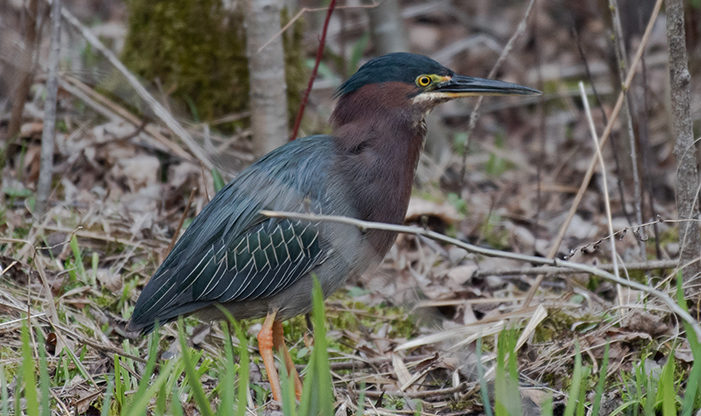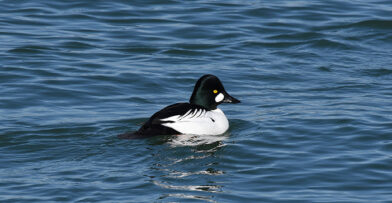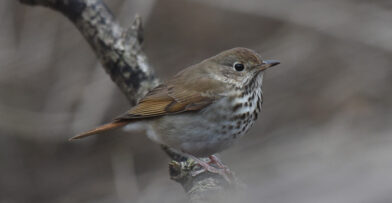Our Bird Profile series highlights a species that is migrating through, breeding, or is a year-round resident of Wisconsin that can be found at Schlitz Audubon or in your backyard.
Name
Green Heron, Butorides virescens
Basic Appearance & Description
The Green Heron is one of the smallest heron species of North America. These stocky birds can be hard to spot because they often remain still on the edge of a wetland, blending into the surrounding vegetation.
When you are able to get a good look at an adult Green Heron, notice their long yellow legs, a dark green cap and back, and chestnut colored neck. The green-colored plumage can look iridescent in the right light. Juveniles have a streaky, brown appearance with lighter spots on their wings.
They spend the breeding season in many parts of the United States, including Wisconsin, and migrate south to their wintering grounds in Central and South America. Some birds in southern states along the Gulf of Mexico remain as residents all year long.
Song
The most common sounds are the sharp “skeow!” calls or a series of “kuk-kuk-kuk” calls. They may make these calls while perched, in flight, or when disturbed.
Diet & Foraging
Most of their diet consists of small fish, like minnows and sunfish, but they also eat a variety of invertebrates, frogs, crayfish, and even small rodents. They forage at the edge of shallow water, standing still or slowly stalking their prey. Then they quickly dart forward, grabbing their prey with a spear-like bill.
Habitat & Nesting
This widespread species can be found in a variety of wetlands with enough vegetation for cover. Unlike other herons who nest in large colonies, Green Herons nest as individual pairs or small groups. They build a platform of sticks in a tree or dense shrubs close to water. Usually 3-5 pale green or blue-green eggs are produced in a clutch, and they may have 1-2 broods.
When & Where to Find at Schlitz Audubon
During spring through late-summer, look closely for Green Herons hunting at the shallow edges of Mystery Lake and the Center’s other ponds. Scan for their crouched silhouette perched in trees overhanging the ponds and don’t forget to listen for their distinctive “skeow” calls.
Other Fun Facts
- The Green Heron is one of the few bird species that use tools! They sometimes find a fishing lure like a twig, feather, or insect and drop it in the water to attract small fish.
- Occasionally, these birds have been observed diving into deeper water to hunt prey and then swimming back to shore.


